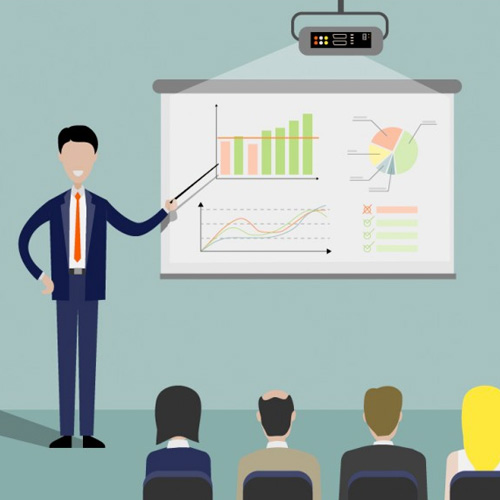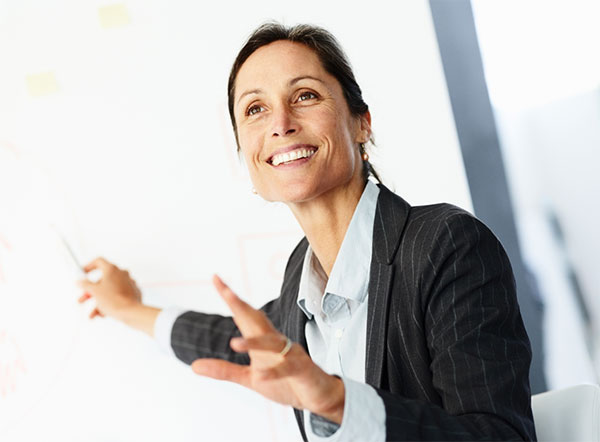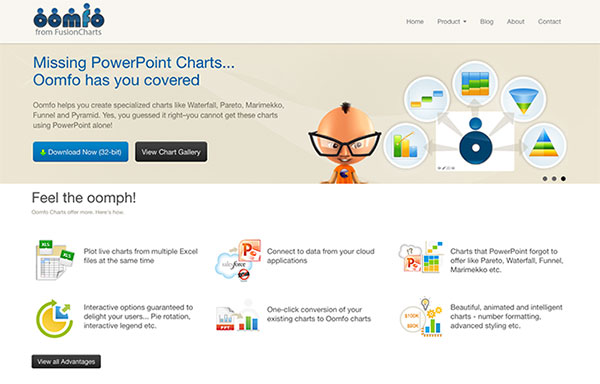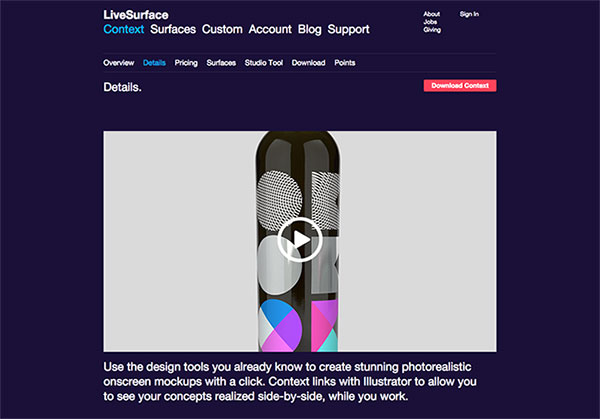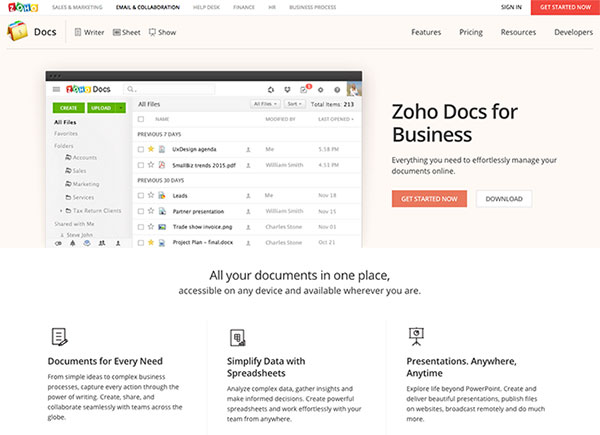How to Give an Effective Design Presentation

Mark Twain said, “There are only two types of speakers in the world: the nervous and liars.” Most of us are in that first category. Maybe you even looked forward to being a graphic designer because you didn’t want to speak to big groups of people. You probably thought you would stay in the studio with your art and let somebody else handle the presentations.
By now, you know that’s not how it works. Designers have to give presentations to just about everybody, including supervisors, colleagues, and total strangers. Not only do you have to speak in front of these people, you’ll often have to present your artwork to them. It’s no wonder most of us get so nervous.
The good news is, giving a graphic design presentation doesn’t have to be scary. It’s actually a perfect way to show off your skills. As a designer, you have a natural advantage because you can make a creative, one-of-a-kind presentation. Today, I’ll teach you how to design a presentation that will blow your audience away.
How to Prepare Your Presentation
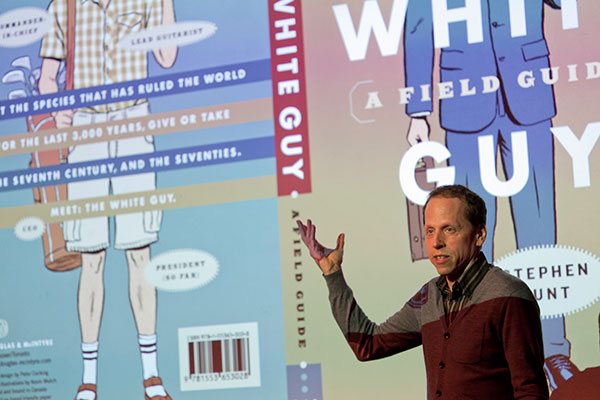
We’ve all seen at least one presentation that made a serious impact on us. The speaker was easy to understand and had good ideas. You can tell that they didn’t just walk onstage hoping for the best. The best speakers look and sound confident because they’ve spent days or even months getting ready. If you want to be a good presenter, you need to be prepared for anything.
Preparation starts way before you even open up PowerPoint. It begins when you find out who your audience is. Speaking to a large crowd is different from a sales pitch or a brainstorming session. Before you start planning your presentation, think about who you’re speaking to, as well as why.
It’s also a good idea to check out the presentation room. Walking into a room you’ve never seen before can be a little unnerving, so scouting out ahead of time will make you more confident for the actual presentation. Get to know the area, or ask someone to send you pictures if you can’t visit first.
Once you’ve done those two things, you might be tempted to jump right into designing slides, but you’re not ready for that. You need to do a little more prep work first.
Here are a few additional steps you should take:
- Look over any guidelines that the clients or event organizers have given you. They will help you stay on topic and make sure you give the audience what they want.
- Keep it concise. Your audience does not need to know every step of the design process or every thought that went into developing an idea. Just focus on what’s really important.
- Expect questions. An audience’s favorite question is, “Why?” Look at each aspect of the design or concept that you’re presenting and ask yourself why it’s made that way.
- Outline your presentation. An outline will help you decide what to say and when. Usually, a 3-part structure works best because it moves through a problem, process, and solution.
- Compare your intro and conclusion. When you read your intro and your conclusion side-by-side, you can tell whether you stayed on topic or not.
- Practice on someone. Saying your presentation out loud helps you hear any mistakes. Do a practice run so you can find those problem areas and get rid of them before the real thing.
Bonus Tip: Set aside 25% of your presentation to talk about the payoff. Tell your audience how your ideas are going to make their lives better.
Extra Things to Include

You’re an expert on what you’re presenting, but you still need to convince your audience. Managers especially like to see proof that supports what you’re saying.
Help your audience trust you by incorporating these elements into your presentation:
- Numbers and statistics. When you pick statistics and graphs, only use the ones that are most helpful. Quality is better than quantity.
- Real life examples. Other people have probably gone through the same problems as your audience. Reassure your audience by letting them know they’re not alone.
- Personas. Instead of choosing one specific example, you can tell the “story” of a made-up person who represents a larger group of real people.
Including graphs on your PowerPoint or telling stories is great, but it’s hard for your audience to picture what you’re saying. People want to see what you are talking about. Bring in a 3D mockup, or do a demonstration. Maybe even let a few people in the audience interact with the mockup, or ask for volunteers to help you demonstrate a concept.
The bad news is, you can’t just give away a mockup to everyone who walks into the room. But you can give your audience a printed handout. Most people forget what they heard in a meeting as soon as they leave, so a handout will help them remember the highlights.
You can also remind people who you are by putting the handouts in personalized presentation folders like these. Not only does a folder keep you organized, it makes you look more professional. You can customize any presentation folder design to look exactly the way you want.
Bonus Tip: Hungry people are a lot less friendly than people who just ate. Bring snacks or drinks to keep your listeners happy.
How to Design a Great PowerPoint

Not every presentation will call for PowerPoint media, but it’s an especially popular medium for people who are presenting complex concepts. This is where most people start to go astray. They try to cram as much information on each slide as they can. Then they cover it all up with bad transitions, bright fonts, and ugly gradients.
But you’re not just any presenter. You’re a graphic designer. You have the skills to create an attractive PowerPoint that your audience actually likes watching.
Here’s how you can make your presentation stand out and still look good:
- Create your own background. Instead of using a template, choose your own background color or create an original image.
- Design a cool title slide. Your very first slide is the perfect place to show off your design skills and make a great first impression.
- Add useful images. You know how to enhance each image to make it add to your presentation and look amazing. Use your photo editing skills, like cropping or Photoshop, to make images more impactful.
- Choose unique typography. Instead of using a default font, choose something unique that nobody else has. Just make sure you limit yourself to 2-3 fonts and that they are easy to read.
One of the biggest reasons PowerPoint has a bad name is that too many people make cluttered slides. (That’s why you shouldn’t use a whole bunch of fonts.) You can get rid of clutter by using a consistent color scheme and layout on all of your slides. Another trick is to remove as many words and bullet points as you can. Just stick with the main highlights. The less text you use, the more room you have to actually design your PowerPoint.
Bonus Tip: Your PowerPoint is like a back up singer. It only exists to make you sound good, not to steal the show from you.
How to Present Yourself Well
It takes less than ten seconds for an audience to form a first impression of a speaker. Part of the reason we get nervous during a presentation is because we expect that first impression to be bad. We think the audience is judging us and that they’re waiting for us to mess up. With that attitude, we feel scared and defensive before we even step onstage.
That’s the wrong line of thinking. Your audience actually wants you to succeed. They understand that things go wrong during presentations, because many of them have made a mistake during a presentation, too. It’s a lot easier to feel confident onstage when you remember that the people watching you are really interested in what you have to say.
Here are some other ways to make yourself feel a lot more comfortable:
- Bring everything you need, plus backups. Technology is not perfect. When you are prepared for something to go wrong, it is no big deal to switch from one device to another.
- Make your presentation easy to remember. Sometimes you don’t have time to practice as much as you wanted, or you lose your train of thought. Set your presentation up so that it’s easy for you to get back on track with notecards, mnemonic devices, and images that will jog your memory.
- Interact with your design. When we’re nervous, we touch our hair, clothes, and face. Instead, use your design to occupy your hands while you’re presenting.
- Laugh at yourself. It is awkward to watch a speaker lose control. If you make a mistake, laugh it off and keep going. Your audience will like the fact that you have a sense of humor.
Engage Your Audience
You know it’s important for you to be comfortable giving your presentation, but you should make sure your audience is comfortable listening as well. If a speaker is awkward, aggressive, or nervous, it makes the audience uncomfortable. An un-engaging speaker is even worse, because then listeners are bored out of their minds.
Being engaging isn’t just about saying interesting things. People only put a 7% value on the words you say, while over half of how people respond to your presentation is based on your facial expression.
To engage your audience, you can do the following:
- Keep your intro short. Use one or two sentences if possible.
- Use normal words. Designers use a lot of words that only other designers can understand. Your audience probably isn’t an expert on your topic, so use words they can understand.
- Vary your tone. If you speak in a monotone, your audience will go to sleep. Match your voice to the presentation. Talk about light subjects in a happy voice and deep subjects in a serious voice.
- Change your facial expression. Most people frown or look upset when they’re nervous. Try to relax and smile.
- Ask, “What questions do you have for me?” When a presenter asks if anyone has questions, they sound like they doubt themselves. Let your audience know that you expect and welcome questions.
Bonus Tip: There are plenty of people who have more speaking experience than you. Those designers are happy to share advice if you ask.
Tools for Designing a Presentation
As you can see, giving a great presentation takes a lot of hard work. I have shared a lot of helpful tips with you, but don’t worry if you feel a little overwhelmed. It is a lot to learn, so I want to give you some tools you can use to help you with your presentation.
Here are just a few of your options:
Haiku Deck
If you have a habit of making messy slides, this app will help you learn how to keep them short and simple.
Oomfo
Oomfo is the perfect site to use when you need to make graphs and charts for your presentation.
Context
This is an app for designers, made by a designer. Context lets you create mockup backgrounds and settings, so you can show your audience how your design would look.
Adobe Color CC
Instead of trying to find a color scheme on your own for your presentation, you can use this tool to help you pick the perfect colors.
Zoho is a great tool if you’re always on the go. It lets you design your whole presentation online.
Great Presentations Don’t Happen by Accident
Good presenters aren’t lucky. They are the ones who take the time to practice and to design an effective presentation. As a designer, you have a major advantage because you have all the tools and skills you need to stand out. You may be nervous at first, but as long as you practice using these tips, you’ll soon be confident.
That is all I have for you today. Please share your stories and tips for creating a good presentation in the comments below!
Image credit <a target="_blank" href="http://Designed%20by%20Freepik” target=”_blank”>freepic
Read More at How to Give an Effective Design Presentation
